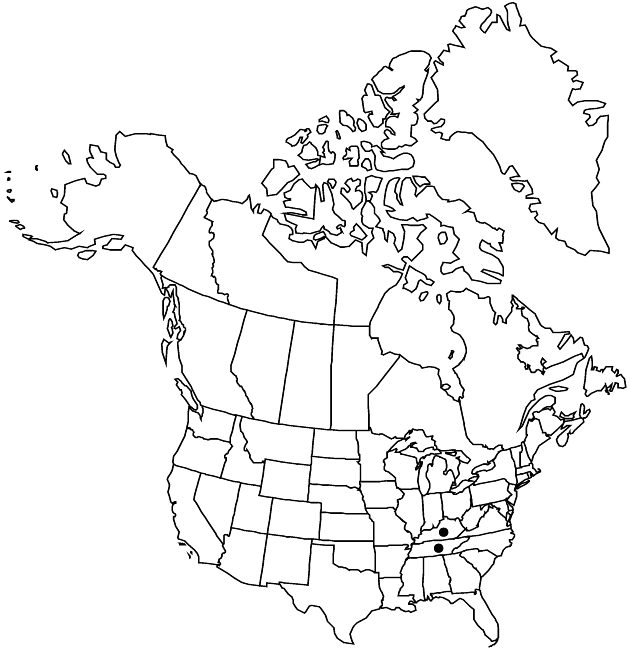Ageratina luciae-brauniae
Phytologia 19: 215. 1970.
Perennials, 30–60 cm. Stems erect, glabrous. Leaves opposite; petioles 25–70 mm; blades broadly ovate-deltate, 4–8 × 5–9 cm, (thin, delicate) bases truncate to subcordate, margins coarsely dentate, apices acute to acuminate, abaxial faces glabrous or sparsely puberulent. Heads clustered. Peduncles 1–3 mm, glabrous or sparsely puberulent. Involucres 3.5–4 mm. Phyllaries: apices acuminate, abaxial faces glabrous or sparsely puberulent. Corollas white, lobes glabrous or sparsely puberulent. Cypselae sparsely and evenly hirtellous. 2n = 34.
Phenology: Flowering Aug–Oct.
Habitat: Under overhanging sandstone (Pottsville formation) cliffs and ledges
Elevation: 400–500 m
Discussion
Ageratina luciae-brauniae was treated by A. F. Clewell and J. W. Wooten (1971) as a synonym of A. altissima and regarded by them as “bizarre plants showing extreme signs of etiolation from growing under limestone ledges” (p. 134). B. E. Wofford (1976) observed that greenhouse transplants of both species maintained distinctions that provide rationale for maintaining A. luciae-brauniae at specific rank.
Ageratina luciae-brauniae is in the Center for Plant Conservation’s National Collection of Endangered Plants.
Selected References
None.
